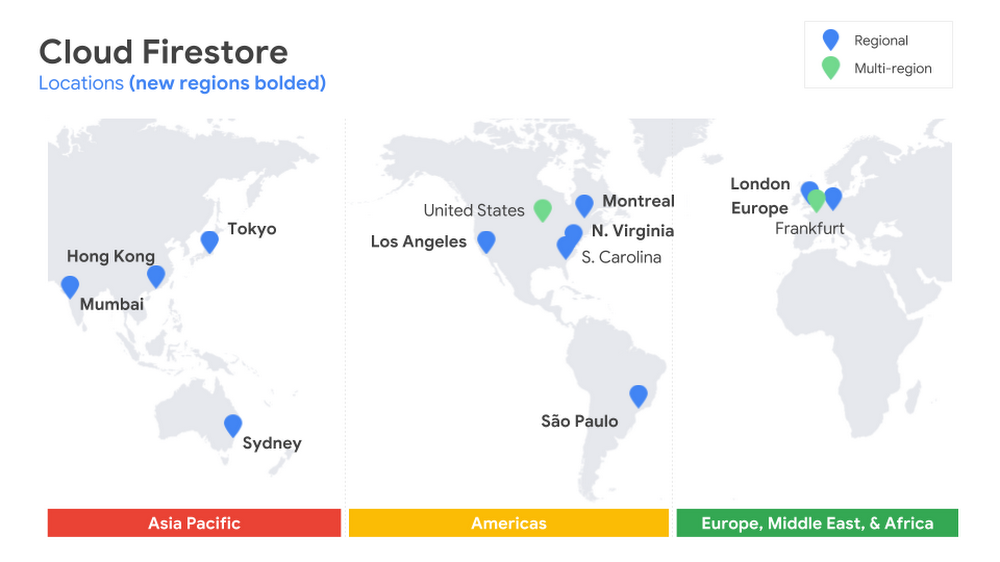Google announced that their NoSQL database in the cloud, Cloud Firestore, is now generally available. With the release, Google is also introducing several new features, such as a StackDriver integration, bringing the service to more regions, and offering a lower pricing tier.
Cloud Firestore has been in beta since the beginning of October 2017. During the beta, Google updated the service in August of last year by adding management and administration tools for Cloud Firestore to the Google Cloud Platform (GCP) console. They also increased the availability to more locations and added new features, such as single-field index controls, and faster security rules deployments.
With the GA release, Google has further expanded the availability of the Cloud Firestore to ten new regions in Asia, Australia, North and South America, and Europe. Furthermore, the service is now also included in the GCP’s formal Service Level Agreements, according to a recent Firebase blog post by Todd Kerpelmann – a guaranteed uptime of 99.999% for multi-region instances of Cloud Firestore, and 99.99% for regional instances.

Another update to the Cloud Firestore is pricing. In the announcement on the Google Blog, new pricing for Cloud Firestore will take effect on March 3, 2019 for most regional instances, and this can be as low as 50% of multi-region instance prices. The new pricing means the customer can replicate data to multiple zones within a region at lower cost and with lower write latency. However, when customers require higher availability and durability, Google recommends multi-region instances. More details on pricing are available at the FireStore pricing page.
One of the new features of Cloud Firestore is the integration of StackDriver monitoring to provide users with the ability to observe the number of read, write, and delete operations the database has received over time – and these are operations that drive the usage costs. With Stackdriver Cloud Firestore users can see usage reports through the “Usage” tab in the Firebase console, setup custom alerts when certain metrics go out of range and get notifications through Slack or PagerDuty. Note that the “Usage” tab is currently still in beta.

Source: https://firebase.googleblog.com/2019/01/cloud-firestore-in-general-availability.html
The GA release generated responses on social media and a few customer testimonials in the announcement blog post. Richard Seroter, VP of product marketing at Pivotal, said on Twitter:
Cloud Firestore does more than just core database tasks. It’s designed to be a complete data backend that handles security and authorization, infrastructure, edge data storage, and synchronization.
One of the testimonials is from a Cloud Firestore customer, The Telegraph, a company that uses the NoSQL database service for their content. Their solution architect Alex Mansfield-Scaddan said:
Cloud Firestore allowed us to build a real-time personalized news feed, keeping readers informed with synchronized content state across all of their devices. It allowed The Telegraph engineering teams to focus on improving engagement with our customers, rather than becoming a real-time database and infrastructure experts.
With Cloud Firestore as a globally available NoSQL database, Google will compete with a similar offering of other public cloud providers like Microsoft, and Amazon:
- Microsoft’s NoSQL service Cosmos DB, available in all Azure regions, has been generally available since May 2017, and receives frequent updates – the last updates were reported by InfoQ a few months ago.
- Amazon offers AWS Dynamo, a NoSQL database, generally available since mid-January 2012, and available in most AWS regions. This database service also receives regular updates – with the most recent addition being support for transactions.